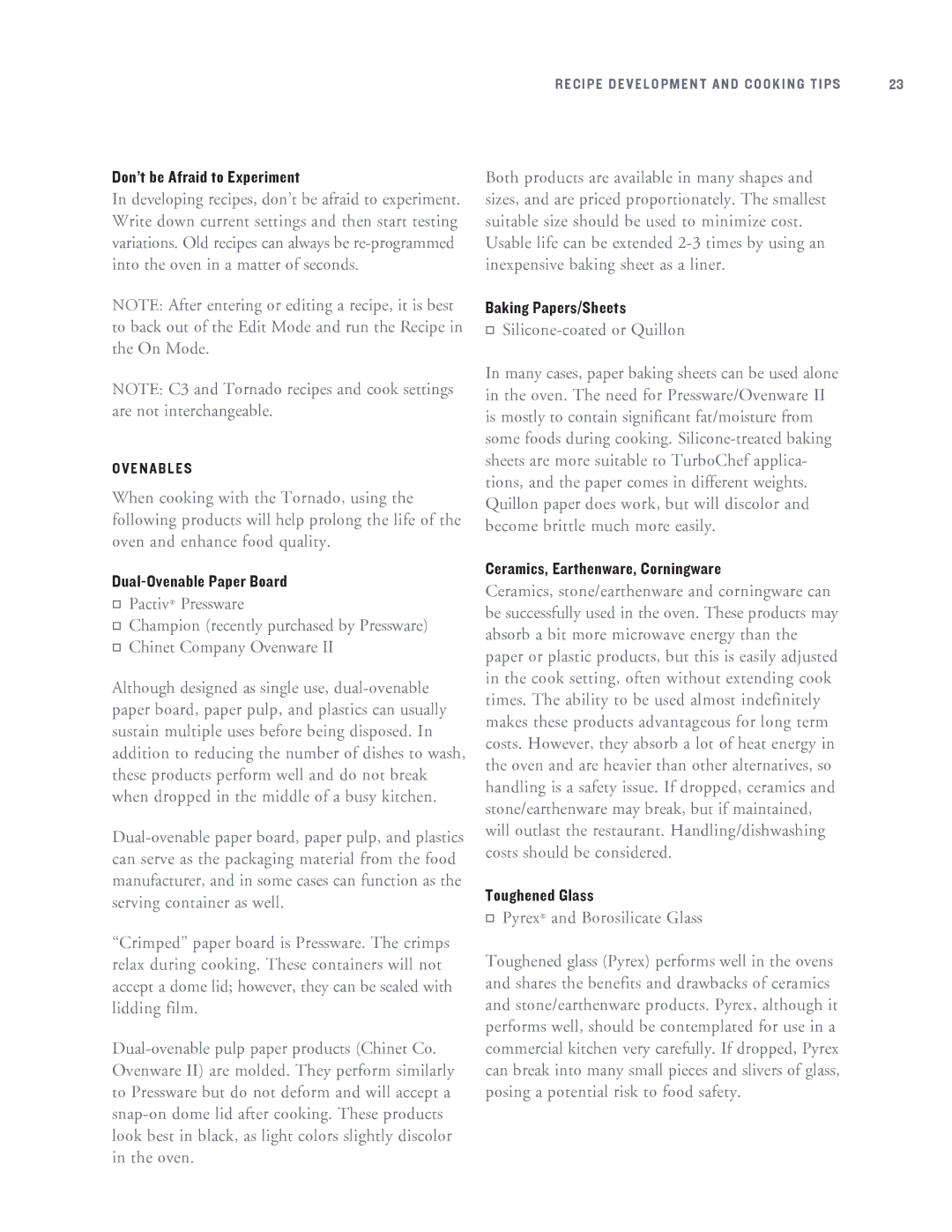RECIPE DEVELOPMENT AND COOKING TIPS | 23 |
Don’t be Afraid to Experiment
In developing recipes, don’t be afraid to experiment. Write down current settings and then start testing variations. Old recipes can always be
NOTE: After entering or editing a recipe, it is best to back out of the Edit Mode and run the Recipe in the On Mode.
NOTE: C3 and Tornado recipes and cook settings are not interchangeable.
O V E N A B L E S
When cooking with the Tornado, using the following products will help prolong the life of the oven and enhance food quality.
Dual-Ovenable Paper Board
Pactiv® Pressware
Champion (recently purchased by Pressware)
Chinet Company Ovenware II
Although designed as single use,
“Crimped” paper board is Pressware. The crimps relax during cooking. These containers will not accept a dome lid; however, they can be sealed with lidding film.
Both products are available in many shapes and sizes, and are priced proportionately. The smallest suitable size should be used to minimize cost. Usable life can be extended
Baking Papers/Sheets
Silicone-coated or Quillon
In many cases, paper baking sheets can be used alone in the oven. The need for Pressware/Ovenware II is mostly to contain significant fat/moisture from some foods during cooking.
Ceramics, Earthenware, Corningware
Ceramics, stone/earthenware and corningware can be successfully used in the oven. These products may absorb a bit more microwave energy than the paper or plastic products, but this is easily adjusted in the cook setting, often without extending cook times. The ability to be used almost indefinitely makes these products advantageous for long term costs. However, they absorb a lot of heat energy in the oven and are heavier than other alternatives, so handling is a safety issue. If dropped, ceramics and stone/earthenware may break, but if maintained, will outlast the restaurant. Handling/dishwashing costs should be considered.
Toughened Glass
Pyrex® and Borosilicate Glass
Toughened glass (Pyrex) performs well in the ovens and shares the benefits and drawbacks of ceramics and stone/earthenware products. Pyrex, although it performs well, should be contemplated for use in a commercial kitchen very carefully. If dropped, Pyrex can break into many small pieces and slivers of glass, posing a potential risk to food safety.
